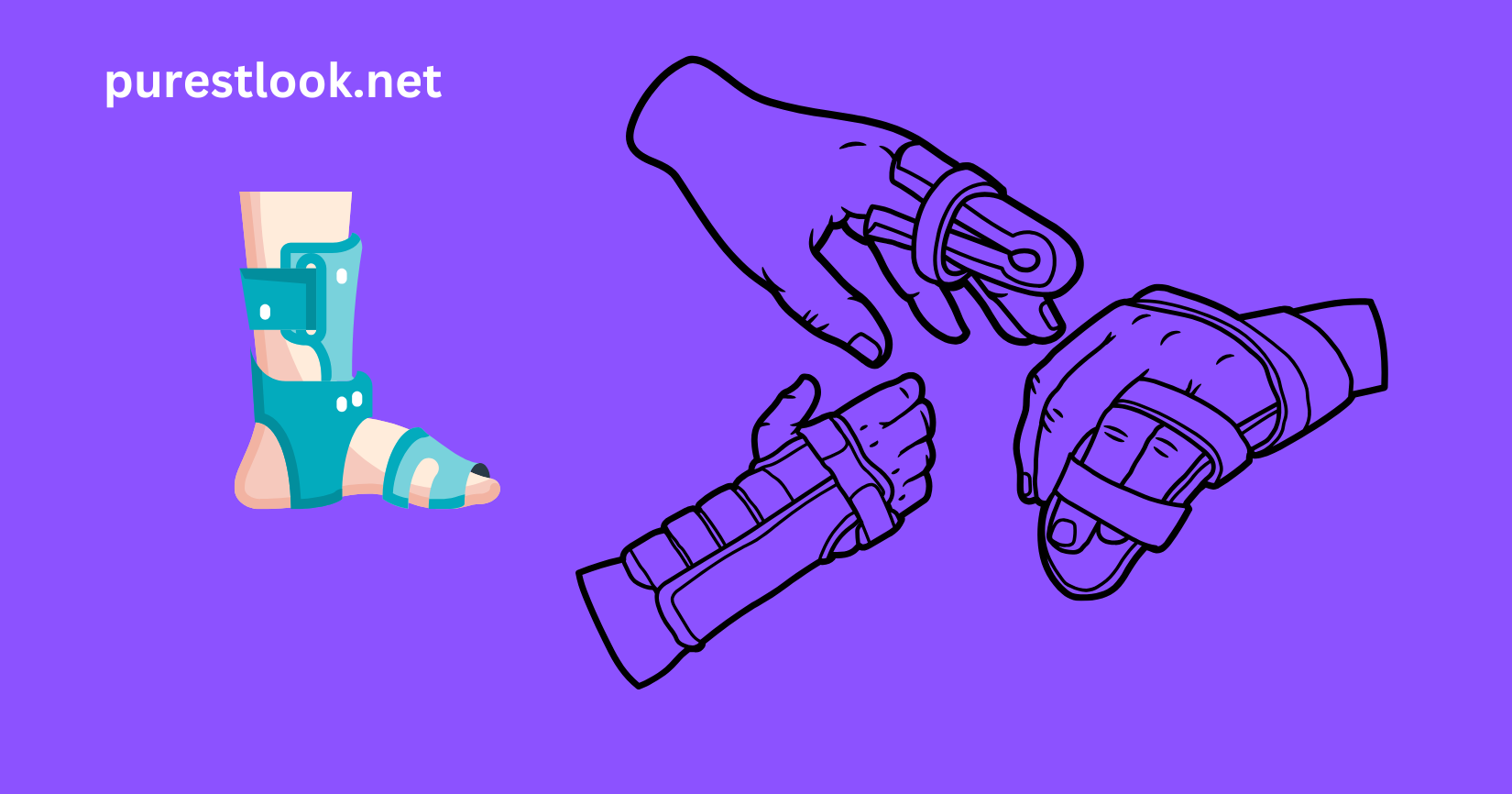Splints are essential medical devices used to support, immobilize, or protect an injured hand. They come in various designs depending on the purpose, injury type, and severity.
This article will help you understand what a splint looks like on a hand, its different forms, and its uses. Whether you’re recovering from a fracture, tendon injury, or need support for chronic conditions, this article will provide all the information you need.
What Does a Splint Look Like on a Hand?
A splint on a hand is typically a rigid or semi-rigid device designed to immobilize or support the injured area. The material and shape depend on the specific condition.
Characteristics of Hand Splints
- Material: Can be made of plastic, metal, foam, or fabric.
- Shape: Conforms to the hand’s natural position or specific area.
- Fastening: Secured with straps, Velcro, or bandages.
- Purpose: Provides stability, reduces pain, and promotes healing.
Types of Hand Splints
| Type of Splint | Material | Purpose | Example Conditions |
|---|---|---|---|
| Static Splint | Plastic/metal | Immobilizes the hand | Fractures, tendon injuries |
| Dynamic Splint | Elastic components | Aids movement while providing support | Tendon repair, post-surgery recovery |
| Functional Splint | Fabric/foam/plastic | Supports during activities | Chronic conditions like arthritis |
| Finger Splint | Metal with foam padding | Immobilizes individual fingers | Dislocations, sprains |
When Are Hand Splints Used?
Hand splints are prescribed for various medical and therapeutic reasons, including:
- Injuries: Fractures, dislocations, and tendon injuries.
- Post-surgery recovery: To maintain proper positioning.
- Chronic conditions: Arthritis or carpal tunnel syndrome.
- Prevention: To avoid further damage or strain.
How to Wear a Hand Splint Properly
- Consult a healthcare professional: Always follow their guidance.
- Position the hand correctly: Ensure it aligns naturally.
- Secure the splint: Fasten straps snugly but not too tight.
- Check for discomfort: Adjust if there is pressure or pain.
Benefits of Using a Hand Splint
- Pain relief: Reduces strain on injured areas.
- Improved healing: Immobilization allows tissues to repair.
- Support: Prevents further injury during daily activities.
How to Care for Your Hand Splint
| Care Tip | Instructions |
|---|---|
| Cleaning | Use a damp cloth and mild soap to wipe. |
| Avoid excessive moisture | Keep the splint dry to maintain durability. |
| Inspect for damage | Regularly check for wear or broken parts. |
| Store properly | Keep in a cool, dry place when not in use. |
Conclusion
Understanding what a hand splint looks like and how it functions is essential for proper use and recovery. Splints are vital tools in treating injuries, chronic conditions, and post-surgery care. By knowing the different types, their benefits, and proper maintenance, you can ensure effective support and healing for your hand. Whether you’re using a static, dynamic, or functional splint, proper application and care are key to optimizing recovery and comfort.
FAQs
What does a splint look like on a hand?
A hand splint typically features a rigid structure shaped to immobilize or support the hand, secured with straps or Velcro for comfort and stability.
Can a splint be worn during daily activities?
Yes, many splints are designed for functional use, allowing you to perform light activities while providing support.
How long should you wear a hand splint?
The duration varies based on the injury or condition. Consult your doctor for specific guidance.
How do you clean a hand splint?
Use a damp cloth with mild soap. Avoid soaking the splint to prevent damage to its structure.
What are the risks of wearing a splint incorrectly?
Improper use can cause discomfort, restrict circulation, or hinder healing. Always follow medical advice for correct usage.
